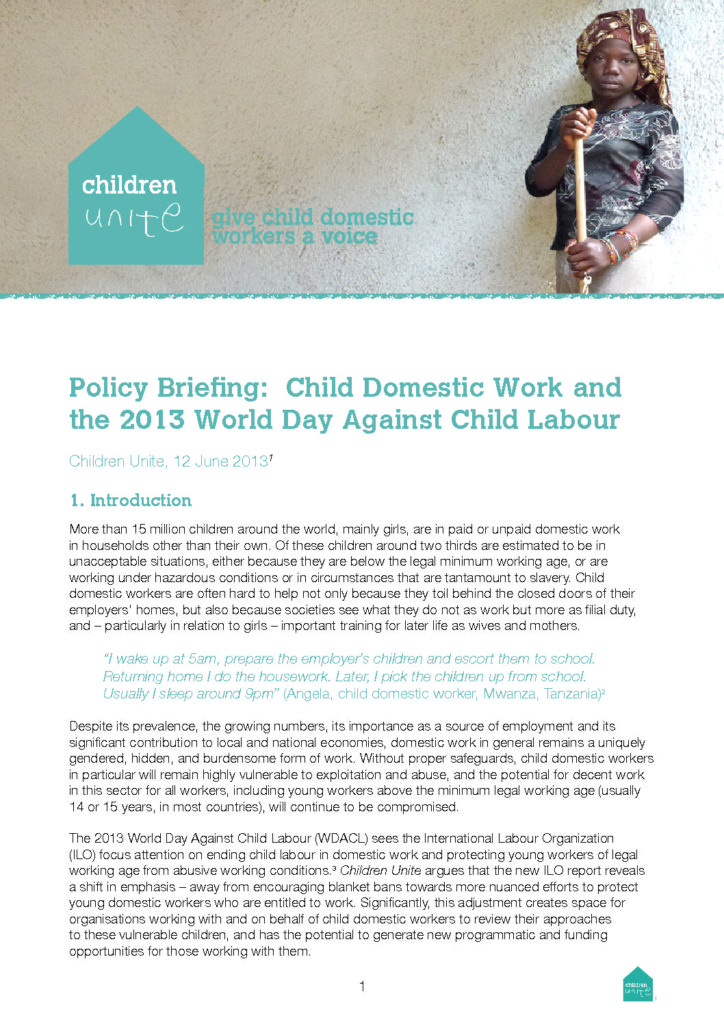
Policy Briefing: Child Domestic Work and the 2013 World Day Against Child Labour
Downloads
Summary
More than 15 million children around the world, mainly girls, are in paid or unpaid domestic work in households other than their own. Of these children around two thirds are estimated to be in unacceptable situations, either because they are below the legal minimum working age, or are working under hazardous conditions or in circumstances that are tantamount to slavery. Child domestic workers are often hard to help not only because they toil behind the closed doors of their employers’ homes, but also because societies see what they do not as work but more as filial duty, and – particularly in relation to girls – important training for later life as wives and mothers.
The 2013 World Day Against Child Labour (WDACL) sees the International Labour Organization (ILO) focus attention on ending child labour in domestic work and protecting young workers of legal working age from abusive working conditions. Children Unite argues that the new ILO report reveals a shift in emphasis – away from encouraging blanket bans towards more nuanced efforts to protect young domestic workers who are entitled to work. Significantly, this adjustment creates space for organisations working with and on behalf of child domestic workers to review their approaches to these vulnerable children, and has the potential to generate new programmatic and funding opportunities for those working with them
Discussion
Users can discuss this report and make suggestions for future updates. You must be signed in to submit a comment.
No comments
Join the conversation and
Become a Member Existing member loginbecome a member.